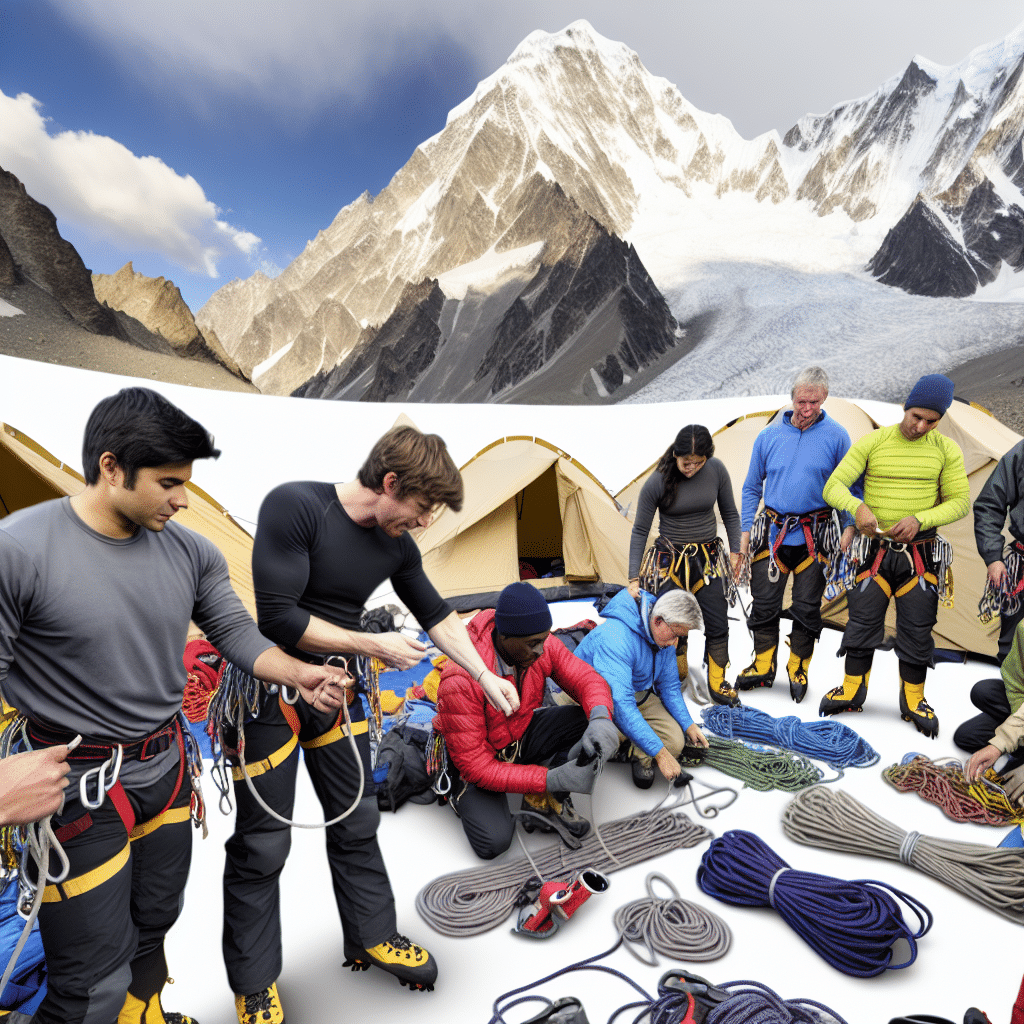Mountain climbing is a thrilling and challenging outdoor activity that requires not only physical strength and mental toughness but also a deep understanding of various technical terms and jargon. Whether you’re a beginner starting your first ascent or a seasoned climber looking to brush up on your knowledge, understanding these mountain climbing terms is crucial. In this guide, we’ll break down some of the most essential vocabulary in the world of mountaineering.
What Are Essential Mountain Climbing Terms?
Mountain climbing, like any specialized activity, comes with its own set of terms and phrases. Knowing these can help ensure you communicate effectively with fellow climbers and understand the intricacies of your climb. Here are some key terms you should know:
Ascent and Descent
– **Ascent:** This refers to the act of climbing up a mountain. It often involves various phases, such as the approach, the climb, and reaching the summit.
– **Descent:** Equally important, this term describes the journey back down the mountain. Proper technique and caution are required to safely descend, as descending can be more dangerous than ascending.
Base Camp
Typically located at the base of a mountain, a base camp serves as the temporary shelter for climbers. It is the starting point for the climb and often a place to acclimatize before making a bid for the summit.
Belay
– **Belay:** This term is both a noun and a verb. To belay someone is to manage the rope in such a way that one climber’s fall is arrested.
– **Belayer:** The person who controls the belay device to protect the climber from falling.
How Can Knowing Mountain Climbing Terms Improve Your Safety?
Understanding mountain climbing terms can significantly improve your safety by ensuring clear communication and proper technique. Familiarize yourself with these terms for a safer climb:
Anchor
An anchor is a point of attachment for a climber, using ropes or other equipment. It is typically a secure point drilled into the rock or another natural feature and is essential for safety during the climb.
Rappel
Rappelling, or abseiling, is a technique used to descend a rock face or wall using a rope. The climber controls their descent speed by feeding the rope through a rappel device.
Pitch
A pitch refers to a section of a climb that can be completed with one length of rope, usually between 30 and 60 meters. Climbs can be single-pitch or multi-pitch, depending on the length and complexity of the route.
What Equipment Do You Need to Know?
Understanding the terminology associated with climbing gear is just as important as knowing the techniques. Here are some key pieces of equipment and related terms:
Carabiner
A carabiner is a metal loop with a spring-loaded gate used to quickly connect and disconnect elements of a climbing system, such as ropes and harnesses. There are various types of carabiners, including locking and non-locking.
Harness
A harness is worn by climbers to attach themselves to the rope and other protective devices. It consists of a waistband and leg loops and is a crucial piece of safety equipment.
Crampons
Crampons are metal spikes attached to the bottom of climbing boots. They are primarily used in ice climbing or when climbing snow-covered slopes, providing essential grip and stability.
How Do You Navigate Different Types of Terrain?
Knowing the terms for various types of terrain will help you prepare and choose the appropriate techniques for your climb:
Alpine Climbing
Alpine climbing involves climbing in high-altitude environments, often with ice and snow. It requires specialized techniques and equipment due to the challenging conditions.
Scrambling
Scrambling is a method of ascending rocky faces and ridges. It involves the use of hands for balance and support and is often considered a middle ground between hiking and technical rock climbing.
Free Climbing vs. Aid Climbing
– **Free Climbing:** This term refers to climbing without the use of artificial aids, relying solely on natural holds and the climber’s ability.
– **Aid Climbing:** In aid climbing, climbers use equipment such as ladders, cams, and bolts to assist in their ascent. This method is often used in extremely difficult or dangerous terrain where free climbing is not feasible.
Conclusion
Understanding mountain climbing terms is more than just jargon; it’s an essential aspect of the sport that can enhance your climbing experience and ensure your safety. Whether you’re discussing the specifics of a route, preparing for an ascent, or coordinating with your climbing team, knowing these terms will make you a more proficient and confident climber. As you continue your climbing adventures, keep this guide handy as a valuable resource to help you navigate the world of mountain climbing.
So, gear up, tie in, and climb on — with a newfound understanding of mountain climbing terms, you’re ready to conquer new heights!




